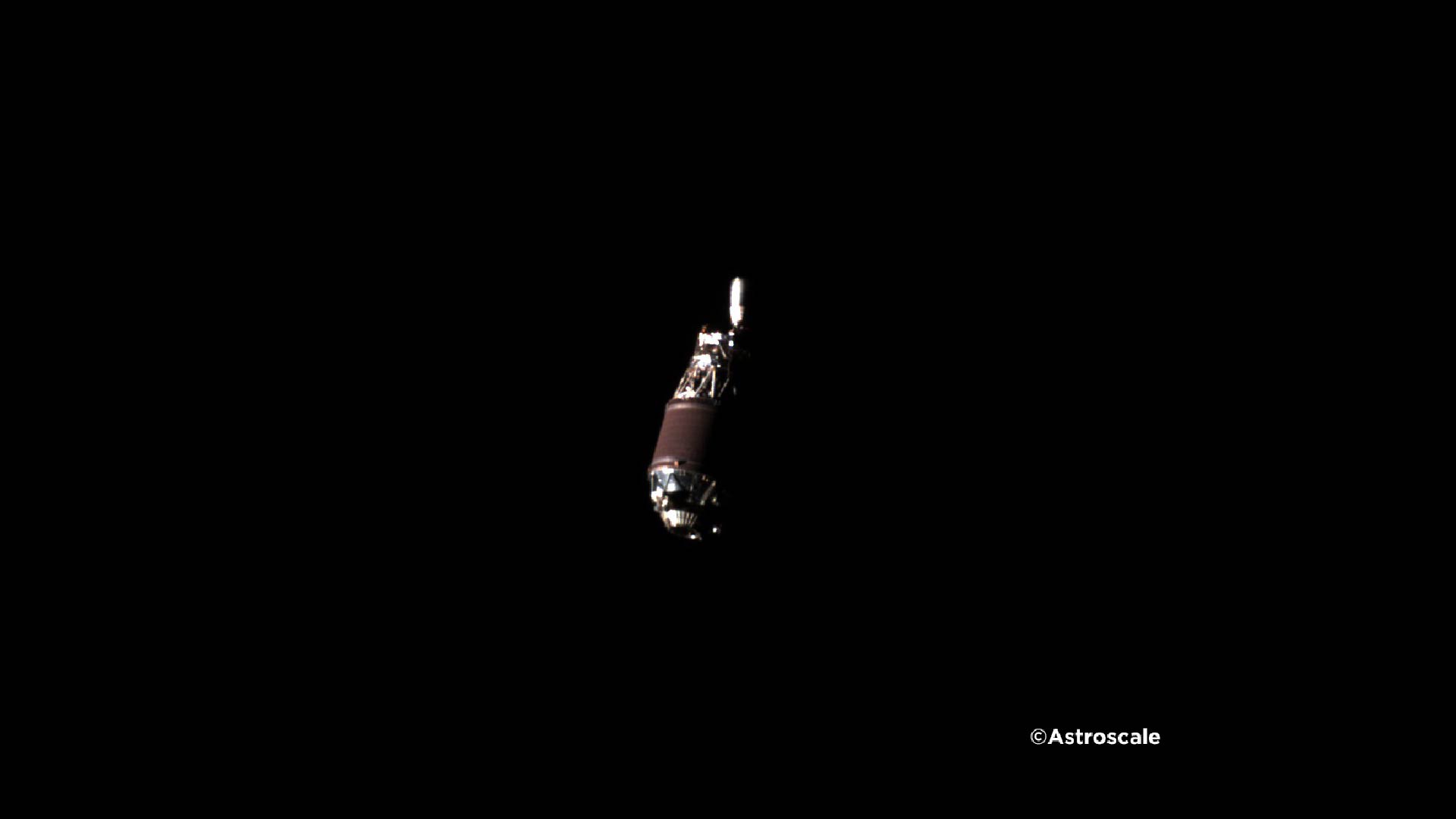Our vision of space is often pristine, a celestial canvas painted with stars and distant galaxies. But the reality orbiting Earth is far grittier. Decades of human activity have left their mark, littering our cosmic backyard with a growing menace – space junk. This week, however, a significant milestone was achieved in the fight against this orbital debris, offering a glimmer of hope for a cleaner future.

A Space Junk Snapshot: A First for Orbital Cleanup
A private Japanese company, Astroscale, has captured the first-ever close-up image of a single piece of space debris in orbit. This wasn’t just a casual snapshot from afar; it involved a daring maneuver – their spacecraft strategically positioned itself right next to the debris, a discarded upper stage from a Japanese rocket. The resulting image is a hauntingly beautiful reminder of the potential hazards lurking in Earth’s orbit. This achievement marks a critical first step in a much larger endeavor: space junk removal.
From Dream to Reality: The Challenges of Space Junk Removal
Imagine a minefield of defunct satellites, rocket parts, and even flecks of paint, all whizzing around Earth at incredible speeds. Even a tiny piece of debris, traveling at thousands of miles per hour, can inflict catastrophic damage upon collision with an operational spacecraft. The longer this debris lingers in orbit, the greater the risk of cascading collisions, creating an ever-expanding cloud of shrapnel. The current situation is concerning. There are over 9,900 tons of space junk circling Earth, posing a significant threat to operational satellites and future space missions. This debris not only hinders scientific discovery but also disrupts communication and navigation services that we rely on every day.
The Growing Threat: Why We Need to Clean Up Space Junk
The consequences of inaction are stark. A collision with a piece of space debris could cripple an Earth-observation satellite, hindering our ability to monitor weather patterns or track climate change. It could disrupt GPS navigation systems, causing chaos in air and maritime transportation. Communication satellites, which underpin our global internet infrastructure, could be damaged or destroyed, leading to widespread blackouts and information outages.
A Glimpse into the Future: Astroscale’s Pioneering Mission
Astroscale’s mission isn’t just about capturing a photo. It’s a critical test run for future debris removal efforts. The successful maneuvering of their spacecraft paves the way for the next phase: using a robotic arm to grapple the debris and deorbit it. This intricate maneuver will nudge the debris out of its stable orbit, causing it to burn up harmlessly in Earth’s atmosphere.
A Global Effort: Astroscale’s Partners and the Fight Against Space Junk
This mission isn’t a solitary effort. Astroscale has partnered with the Japan Aerospace Exploration Agency (JAXA) on this crucial initiative. Other space agencies worldwide, including the European Space Agency (ESA) and NASA, are also actively developing debris removal technologies. The fight against space junk is a global responsibility, requiring international collaboration to tackle this shared challenge.
A Spookily Stunning Image: A Beacon of Hope for a Cleaner Future
The close-up image of space debris captured by Astroscale is a stark reminder of the growing issue we face. However, it’s also a beacon of hope. It signifies humanity’s commitment to tackling this challenge and ensuring the long-term sustainability of space exploration. The image may be hauntingly beautiful, but the mission it represents is a crucial step towards a cleaner and safer future for our orbital environment. This first-of-its-kind image serves as a stark reminder of the growing problem, but it also ushers in a new era of space debris removal, promising a future where our celestial neighborhood is a bit less cluttered and a whole lot safer.

















